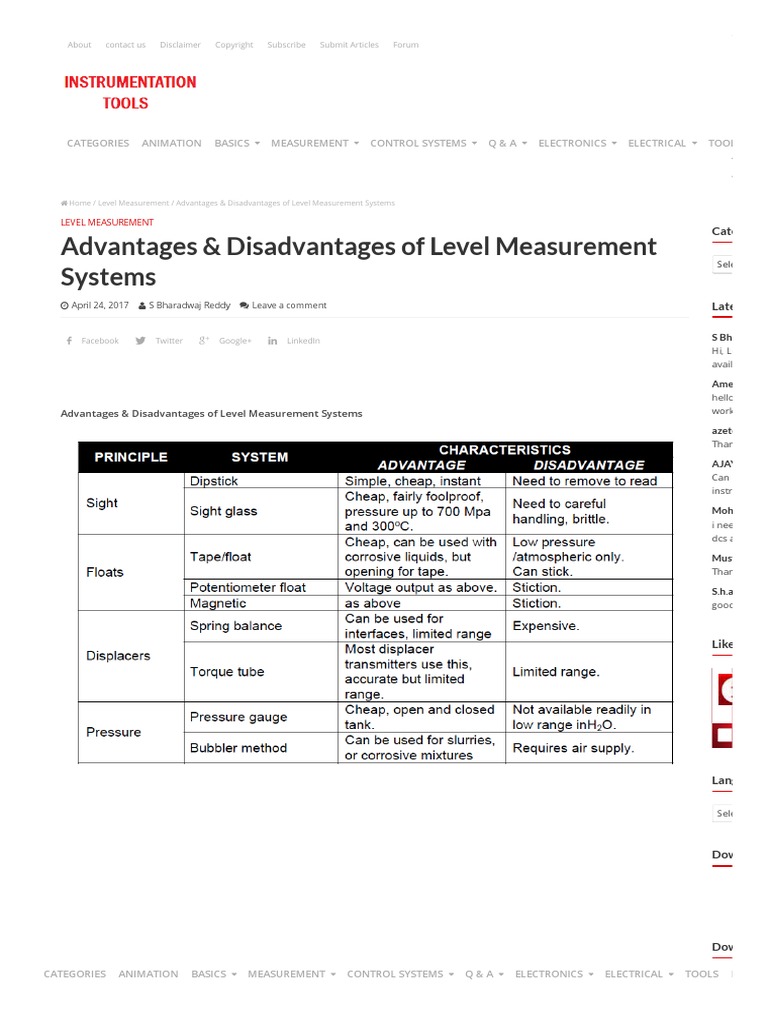Measuring, in its essence, is akin to capturing ephemeral moments within the vast continuum of existence. It serves as a bridge between the abstract world of concepts and the tangible dimensions of reality. In the realm of science and engineering, measurement is not merely a mundane activity; it is an act of enlightenment. However, it is crucial to delve into both the advantages and disadvantages of measuring, as understanding these facets paves the path for informed decisions and innovation.
Advantages of Measuring
At the forefront of the myriad advantages of measuring is the enhancement of precision. Measuring allows for quantification, which translates subjective experiences into objective data. This transmogrification is essential in scientific paradigms where accuracy can mean the difference between innovation and stagnation. Whether it is calibrating a highly sensitive instrument or determining the properties of a material, precise measurements are indispensable.
Furthermore, measuring fosters standardization. In an increasingly globalized world, where disparate entities must collaborate, standardized measurements allow for coherent communication. The establishment of universal measurements, such as the metric system, has streamlined international cooperation. When various stakeholders operate from the same quantitative framework, the potential for synergy blossoms.
In addition to standardization, measuring reinforces decision-making processes. Data-driven decisions possess a level of credence that intuition often lacks. Organizations leverage measurements to inform strategies, optimize performance, and minimize risks. For instance, in manufacturing, metrics such as yield rates and efficiency ratios play pivotal roles in refining processes and enhancing productivity. Such empirical evidence can be a beacon guiding businesses through turbulent market conditions.
Moreover, measurement engenders accountability. In both research and business environments, quantifiable results promote transparency. For researchers, measured results bolster the integrity of their findings and affirm the validity of their hypotheses. In the commercial sector, measurable outcomes — such as profit margins and return on investments — enable stakeholders to assess performance rigorously. Accountability brought forth by measurement paves the way for trust and integrity in professional relationships.
Notably, measuring cultivates knowledge. Through rigorous measurement techniques, phenomena that once eluded our understanding become accessible. Consider the implications of measuring the speed of light: this pursuit not only unraveled the nature of light itself but also transformed our comprehension of the universe, paving the way for the theories of relativity. Each accurate measurement expands the collective knowledge base, fostering further inquiry and discovery.
Finally, measuring stimulates innovation. The process of identifying parameters and establishing metrics often leads to novel insights. Scientists and engineers routinely invent new measurement technologies that open doors to previously unreachable realms of understanding. This continual cycle of measuring and innovating represents a critical evolutionary mechanism within science and engineering disciplines.
Disadvantages of Measuring
Additionally, the incessant pursuit of measurable outcomes can foster a culture of quantification that prioritizes numbers over qualitative factors. In educational systems, an emphasis on standardized testing often undermines the richness of the learning experience. Similarly, in healthcare, an overreliance on numerical metrics may detract from patient-centered care and the nuanced understanding of individual well-being.
Furthermore, measuring can lead to complacency or stagnation. If measurements are viewed as definitive endpoints rather than fluid indicators, stakeholders may become entrenched in existing procedures or beliefs. A failure to adapt to new findings or methodologies may inhibit progress, creating an environment where innovation is stifled by the comfort of the status quo.
Lastly, the cost of measuring can be prohibitive. High-precision instruments are often accompanied by substantial financial investments, not to mention the costs associated with staff training and operational maintenance. For smaller organizations or less wealthy nations, the economic burden associated with comprehensive measurement practices may serve as a barrier, further entrenching inequalities in access to knowledge and technology.
In conclusion, measuring is a double-edged sword, equipping humanity with the tools for precision, accountability, and innovation while simultaneously presenting challenges that must be navigated with care. It is imperative to recognize that while measurement has the power to illuminate understanding, over-reliance can obscure the very complexities that measurement seeks to clarify. As the pursuit of knowledge continues unabated, it is essential to maintain an equilibrium, leveraging the advantages of measuring while remaining cognizant of its inherent limitations. The journey of measuring is not merely one of numbers; it is a rich tapestry that connects our past, present, and future, inviting us to explore the depths of understanding that lie beyond the visible horizon.










